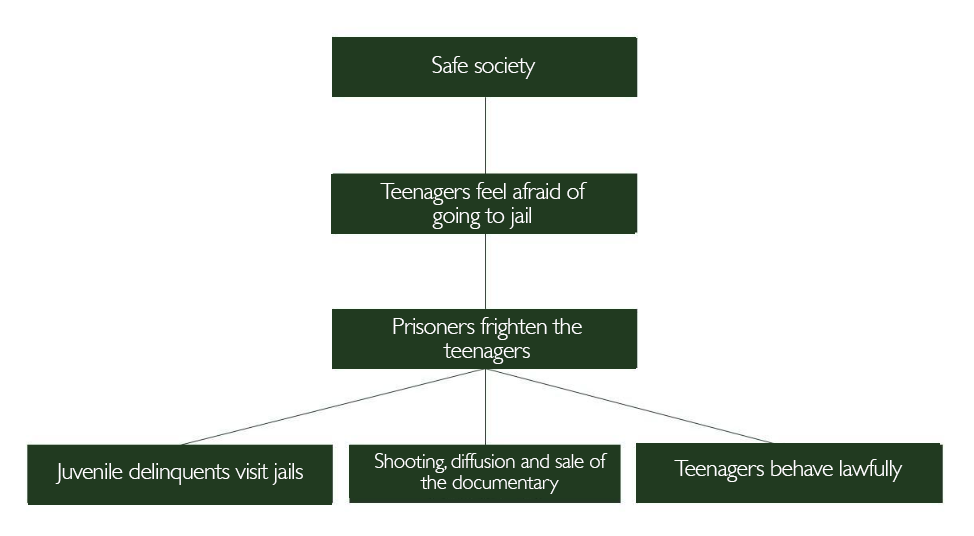
Pivoting impact strategies: indispensable to the transformation process
By Pedro Olazabal, Co-Founder of Hands on Impact
In 1978, the documentary Scared Straight! was released. It tells the true story of a group of juvenile delinquents who get taken on 3-hour guided sessions through a state prison.
Filmed in Rahway State Prison, the documentary features a group of inmates known as the “lifers”, who berate, yell at and frighten the juvenile delinquents in order to “scare them straight” and dissuade them from a life in prison.
The prisoners terrify the teenagers through the prison cell bars, threatening them and mocking them, the guards attesting to the seriousness of the threats. Later, the guards show them a prisoner tied to a chair and forcibly sedated. The teenagers are horrified and say they do not want the end up there.
The teenagers in this documentary and the 1980 sequel Scared Straight: Another Story were young 15- to 19-year-old repeat offenders of crimes ranging from theft, drug addiction and public intoxication through to gambling, counterfeiting and blackmail. Most did not go on to commit a felony.
Though I don’t know if Scared Straight! considered itself to be a social enterprise, its intent to curb delinquency is clear. The (summarized) impact strategy, of this social impact enterprise might be the following:

Beyond achieving the social impact of a documentary getting made on the subject, this enterprise was a very interesting business.
In fact, Scared Straight! was quite successful: It won the Oscar Award for best documentary in 1978 along with eight Emmys, which allowed the story to get remade repeated in a variety of formats.
In 1980, James Finckenauer, a professor at the Rutgers School of Criminal Justice, published an analysis of the Scared Straight! program using a control group, which had not been done before. His study concluded that the teenagers who went through the program were actually more likely to commit crimes than those who did not.
A meta-analysis published in 2013 showed that the results of a Scared Straight! series and similar programs showed that they actively increased crime rates and led to greater rates of reoffences compared to the control groups who got no intervention. The reason for the increase is unclear. The UK College of Policing agrees that there is “very strong quality” evidence that Scared Straight! programs lead to an increase in delinquency.
A surprising result that might have been avoided. From 1978 until at least 2015, there have been programs of this type.
Performing trial and error testing of business strategies is one of the teachings that has taken root across much of the startup world. Anyone who has made a foray into the world of entrepreneurship learns to say pivot right from the outset.
The essence of this way of doing business lies in your strategies always having assumptions and hypotheses you are unaware of. It is only upon seeing the reality of strategy implementation that you can determine whether you are on the right path or should make a change.
We rarely see, however, businesses that seek to have a positive impact do the same with their impact strategies. This is what happened to Scared Straight!, and what we must avoid.
Just as we check if our positioning, sales and product design strategies fit into the market, we must also check to see if the impact strategies are having the desired impact.
However, we also know that impact startups do not have enough resources to carry out the studies mentioned in this post, or even a meta-analysis of the different studies. The approach should therefore be to strike a balance between a robust validation of impact strategy and the resources needed to perform that validation.
The way social impact enterprises might find this balance should combine primary sources with secondary sources. To continue with the example of Scared Straight!, on a very tight budget, they could have checked whether there were indications that the strategy was working or if certain aspects could be studied further.
1. Performing a background check on the juveniles who were going to visit the jails.
2. Use psychological tests to see if the visits were having a (real) impact on sensitizing the juveniles about jail and crime in general.
3. Find similar benchmarks in juvenile delinquency in national or state records (before and after the intervention).
By tracking the strategy in this way, decisions can be made with few resources because they tell us about:
1. Our intervention specifically and in the short term. Have we truly managed to change the opinion of our target group?
2. Thanks to the benchmarks and public records found, we can see in the medium-term whether the intervention achieved results that differ from what could have happened. Because fortunately, most of the juvenile delinquents stopped their delinquent behavior with no intervention needed.
Just like any other strategy, impact strategies need constant validation, learning feedback and continuous improvement.


